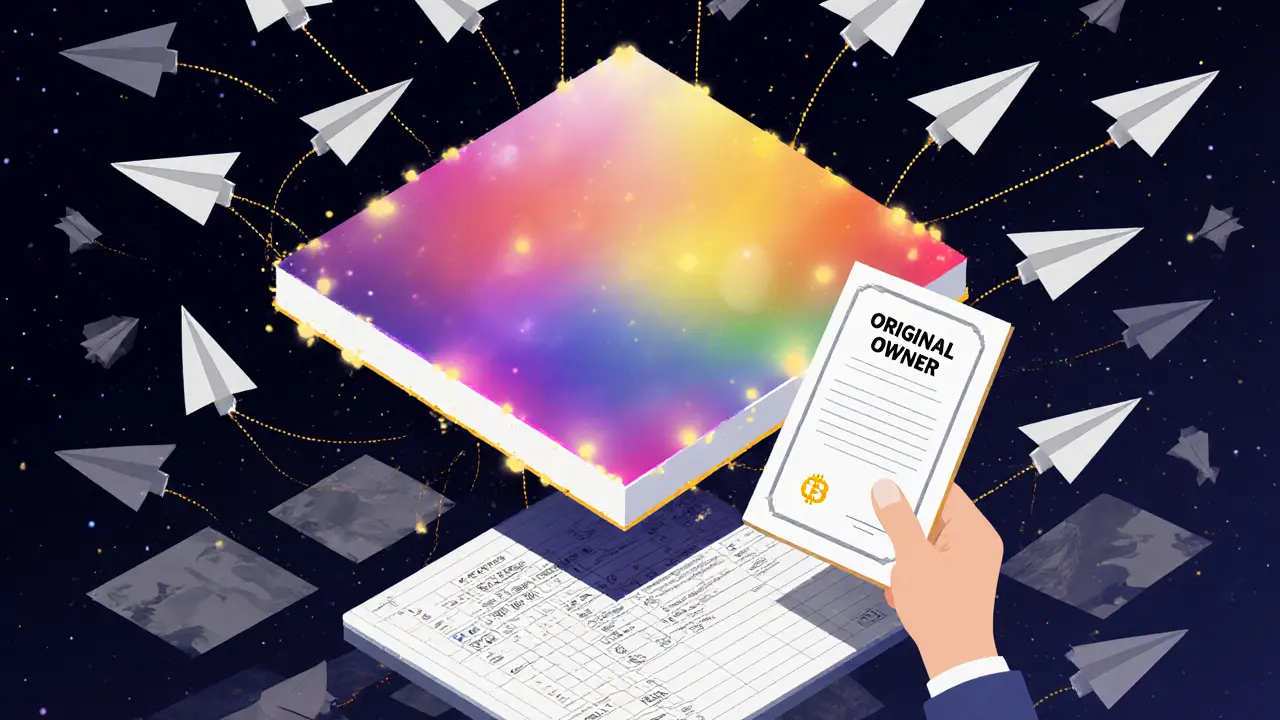NFT Digital Art: What It Is, Why It Matters, and Where to Find Real Value
When you buy an NFT digital art, a unique digital asset verified on a blockchain that proves ownership of a piece of art, music, or collectible. Also known as digital collectibles, it isn’t just a JPG you downloaded—it’s a verified certificate of authenticity tied to your wallet. Unlike a regular image file, an NFT digital art piece has a public record showing who created it, who owns it now, and every time it’s been sold. That’s the core idea: ownership you can’t copy, fake, or delete.
This isn’t just about pretty pictures. NFT digital art connects directly to blockchain art, artworks built on decentralized ledgers that allow creators to earn royalties automatically every time their work resells. Artists like Beeple and Pak proved this model works—some pieces sold for millions because collectors didn’t just want the image, they wanted the proof of being the first or only owner. And it’s not just for galleries. Games, virtual worlds, and even social profiles now use NFTs as status symbols or functional items. But here’s the catch: most NFT art projects fail. The market is crowded with low-effort collections and bots inflating prices. What separates real value from noise? A strong creator, clear utility, and an active community.
NFT marketplace, a platform where NFT digital art is bought, sold, and traded using cryptocurrency is where all this comes together. But not all marketplaces are equal. Some are full of scams, fake volumes, and abandoned projects. Others, like the ones tied to real games or communities, still hold value because people actually use the art—whether as avatars, access passes, or in-game items. The NFT art that survives isn’t the one with the flashiest visuals; it’s the one with a purpose. Think of it like vinyl records: the hype comes and goes, but the ones with great music, limited pressings, and loyal fans? They keep their worth.
Looking at the posts here, you’ll see real examples of what works and what doesn’t. Some NFT airdrops gave away free digital items tied to games like OneRare and NBOX—projects where the art had a role beyond just looking cool. Others, like TOPGOAL’s European Cup NFTs, had big launches but faded fast because there was no ongoing use. The difference? One had a living ecosystem; the other was a one-time promotion. You’ll also find warnings about fake platforms and empty collections that look like art but have no blockchain proof or community behind them. This isn’t a fantasy market anymore—it’s a practical one. If you’re looking to buy, collect, or even create NFT digital art, you need to know what’s real, what’s temporary, and what’s built to last.
Below, you’ll find honest reviews, real case studies, and clear warnings about what to avoid. No fluff. No hype. Just what’s actually happening in NFT digital art right now—and how to tell the difference between something valuable and something that’s already gone.
What Are NFT Digital Art Collectibles? A Clear Guide to Ownership, Value, and How They Work
NFT digital art collectibles are unique blockchain-backed tokens that prove ownership of digital artworks. Learn how they work, why they have value, and what you're really buying when you purchase one.
Details +